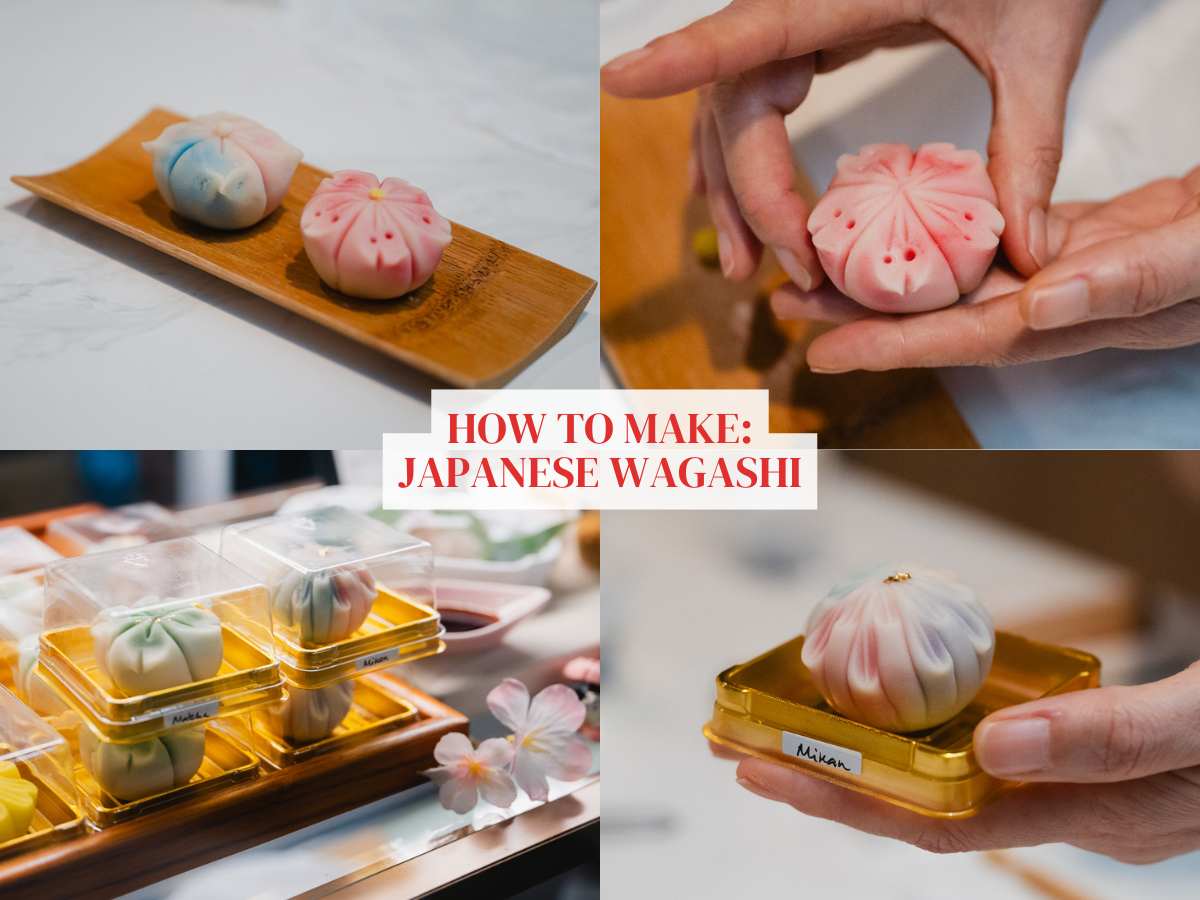How to Make: Japanese wagashi — by a self-taught confectioner with a love and passion for the traditional sweets
How to Make is a HungryGoWhere series spotlighting popular foods in Singapore and the work that goes into making them.
If you ask us, Japan is a country that we’d immediately book a flight to — no questions asked.
With Japan’s plethora of mouthwatering food options, picturesque scenery and multifaceted culture, you’ll never run out of things to eat and try (which makes it one of our favourite travel destinations!).
Besides the usual izakaya, chirashi and barbecued offerings that are a dime a dozen here in Singapore, though, Japanese culture has so much more to offer.
One such underrated food item is the Japanese wagashi — traditional, gorgeous confections best relished with a cup of green tea.
We caught up with local business Love for Wagashi to find out more about the picturesque treats and how they’re made.
What is wagashi?

Wagashi refers to a spectrum of traditional Japanese sweets typically made from a wide range of beans, sugars, starches and mochi.
They’re best paired with tea, specifically green tea, to bring out their aromatic flavours.
Love for Wagashi specialises in Japanese nerikiri wagashi in particular.
For the uninitiated, nerikiri wagashi are indulgent sweets kneaded with shiro-an (white bean paste) and gyuhi (soft mochi dough made from glutinous rice flour and water).
While the ingredients may seem straightforward, preparing these traditional treats from scratch is anything but.
Invented by Japanese artisans over two thousand years ago, these chewy, bite-sized morsels are meticulously hand-sculpted to recreate the flavours, seasons, flora and fauna in Japan.
Because of the effort and devotion that goes into making each sweet, nerikiri wagashi weren’t widely available to the masses. Instead, it was typically the realm of rich nobles, who would savour them during tea ceremonies.
It takes time, patience and dedication to perfect confections as intricately designed as these. That’s why nerikiri wagashi is seen as an edible artform — they’re as stunning as they’re delicious.
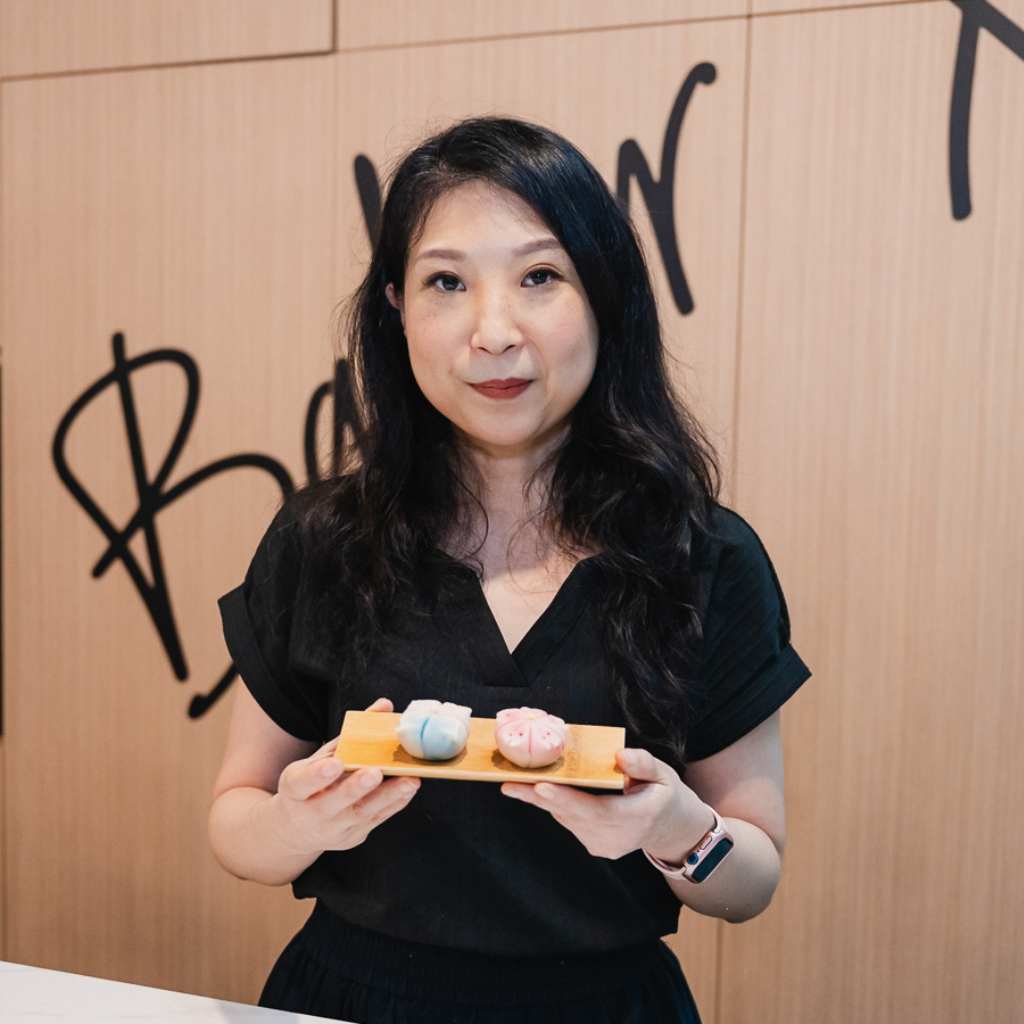
You don’t have to fly to Japan just to sample these treats, though.
Love for Wagashi, one of the rare few wagashi makers in Singapore, has earned a reputation for serving gorgeous, authentic nerikiri wagashi — akin to those found in Japan.
At its helm is bubbly, self-taught confectioner Dionne Ho, 43.
How Love for Wagashi came to be
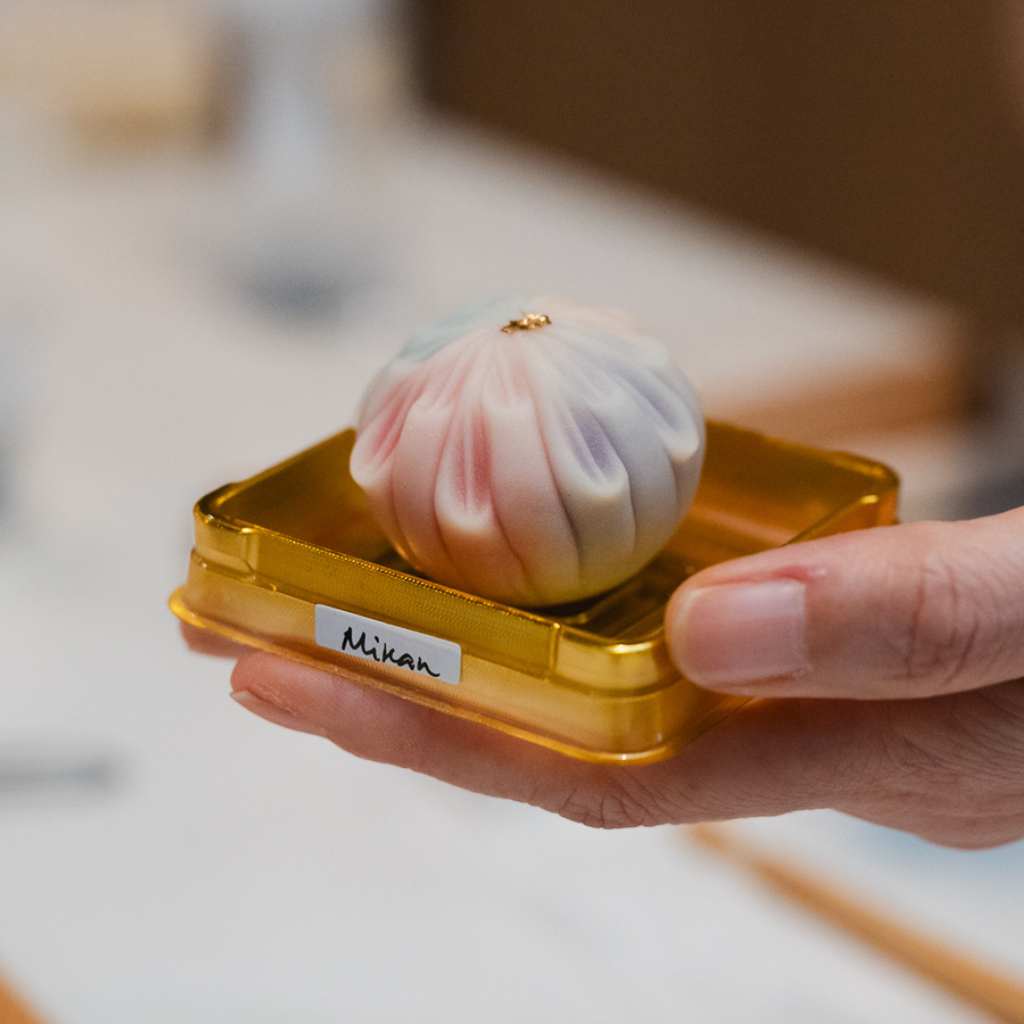
Prior to being a wagashi maker, Dionne was a professional watercolour artist.
She had never imagined that she would one day enter the F&B industry. It was by chance — or fate — that she stumbled upon the traditional sweets in late 2020.
“I came across Japanese nerikiri sweets online one day,” she explains. “I’ve always loved pretty things and I was so intrigued by how beautiful they were.”
Tempted to try the treats herself, she tried to buy them here but there were no confectioneries in Singapore that specialised in wagashi, back then.
Struck with a sudden, new-found desire to recreate the Japanese confections herself, Dionne threw herself into the art of wagashi making.

“I bought a book that taught me how to make wagashi,” she says. “I also followed different YouTube tutorials.”
Using these aids as a guide, Dionne spent months researching and experimenting with different recipes in her small home kitchen.

After a few months of labour-intensive practice, Dionne finally perfected her nerikiri wagashi recipe.
Proud of her craftsmanship, Dionne began posting pictures of her breathtaking creations on her Instagram page: Love For Wagashi.
To her surprise, her account quickly gained traction and requests to order her nerikiri wagashi started pouring in.
“I had to figure out how to make them on a larger scale,” she admits.
With a growing demand for her sweets, Dionne decided to officially launch Love for Wagashi in early 2021.
The online business then transitioned to a partial kitchen space at Jalan Pelikat in Kovan.
As the business grew, Dionne needed more room for the higher volume of orders she was receiving. She subsequently moved to her own unit in the same building in November 2021.
Love for Wagashi has operated out of that space since, although Dionne plans to expand the brand and open a dine-in outlet one day.
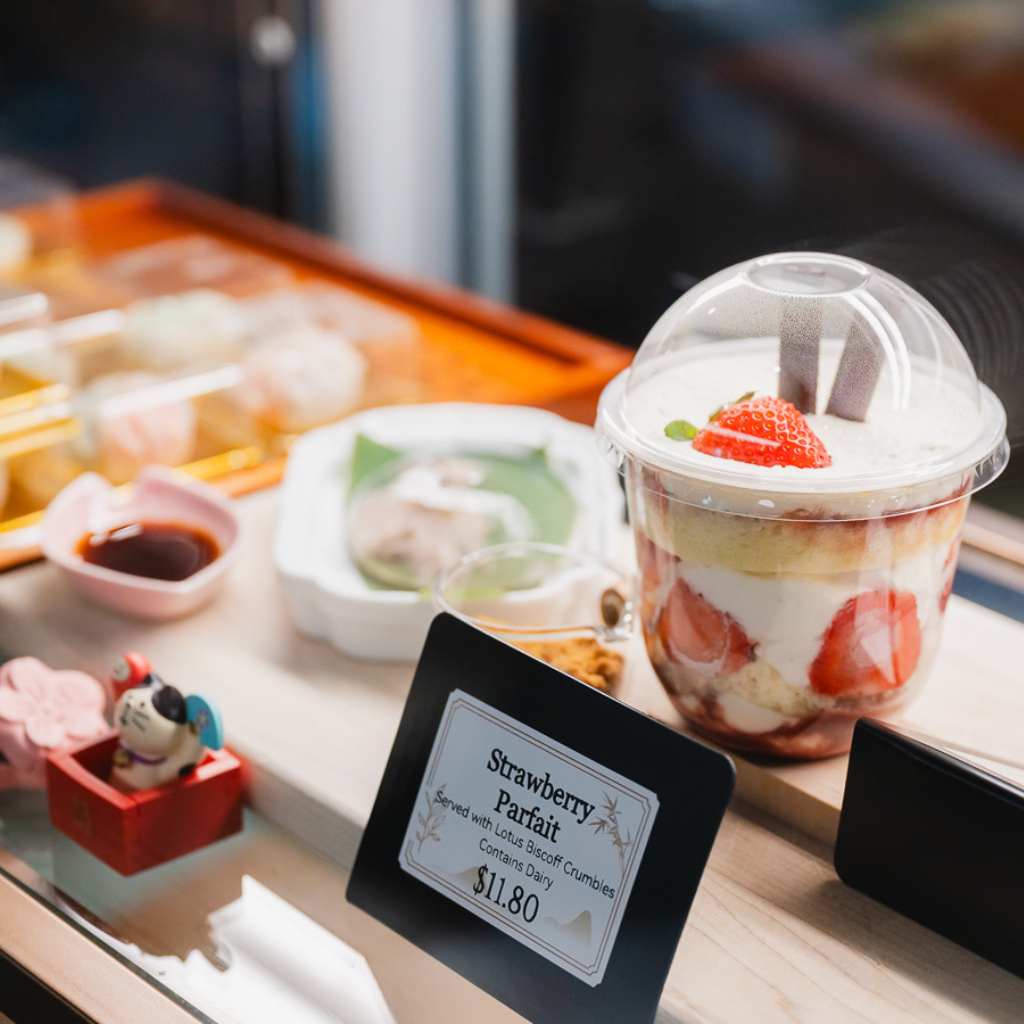
Her recent residency at Baker X — a cafe at Orchard Central that spotlights home bakers and small businesses — has also allowed her to showcase her sweets to a larger audience, as well as test the market and improve on recipes.
Dionne’s residency runs until Aug 18, so do catch her at Baker X before she leaves.
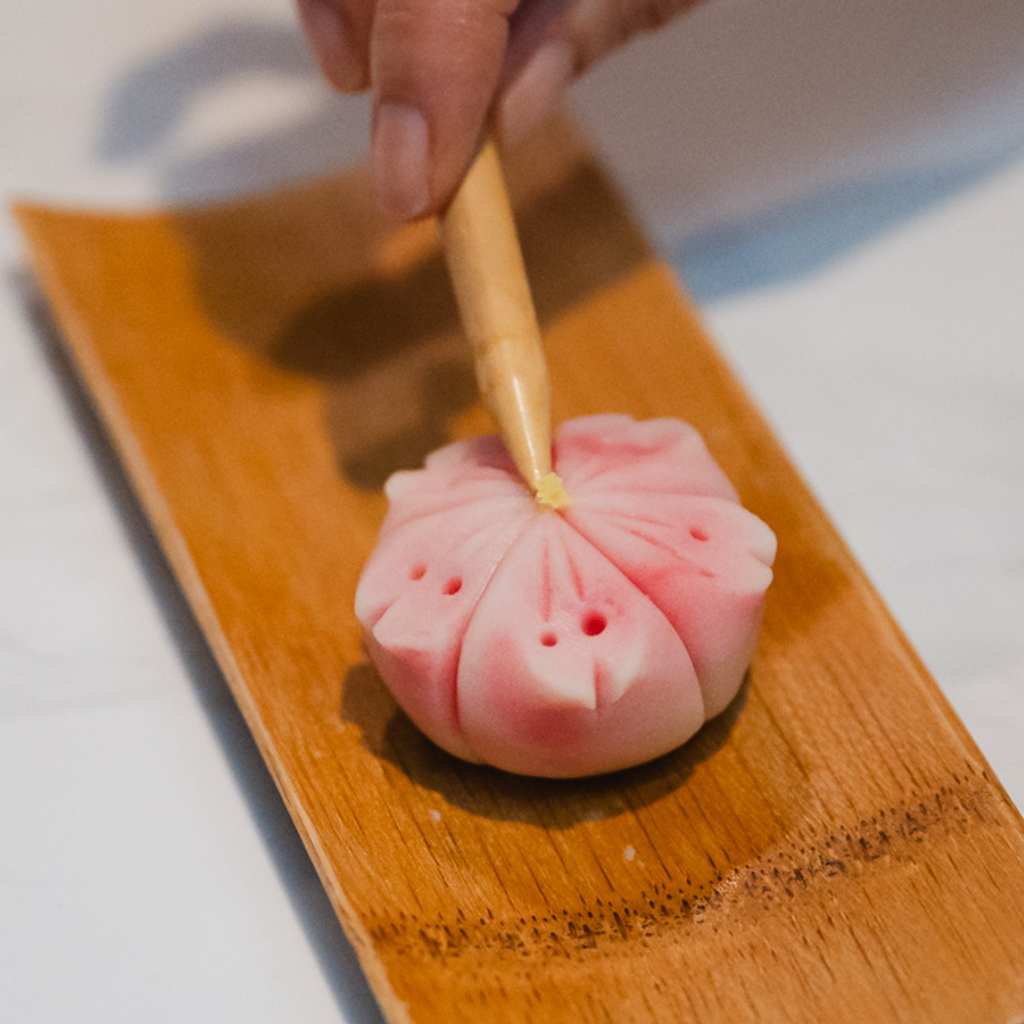
As with many wagashi, Dionne’s creations are centred around the different seasons in Japan.
Every morsel is crafted to showcase the scenic motifs of a season, such as sunflowers and hydrangeas in the summer, and so on.
Flavours-wise, the traditional shiro-an and azuki red bean fillings are the default, but keep an eye out for limited-time flavours that showcase the season’s best.
For example, in the summer, yuzu takes centre stage in her sweets, while autumn will spotlight hints of purple sweet potato, chrysanthemum or osmanthus.
Making Japanese nerikiri wagashi isn’t an easy feat, but can be mastered with plenty of practice and dedication to the craft, says Dionne.
Here’s the low-down, if you’re hankering to try it for yourself — all you need are a handful of ingredients and you’re set to make the sweets from scratch.
How to make Japanese nerikiri wagashi
Step 1: Prepare the shiro-an
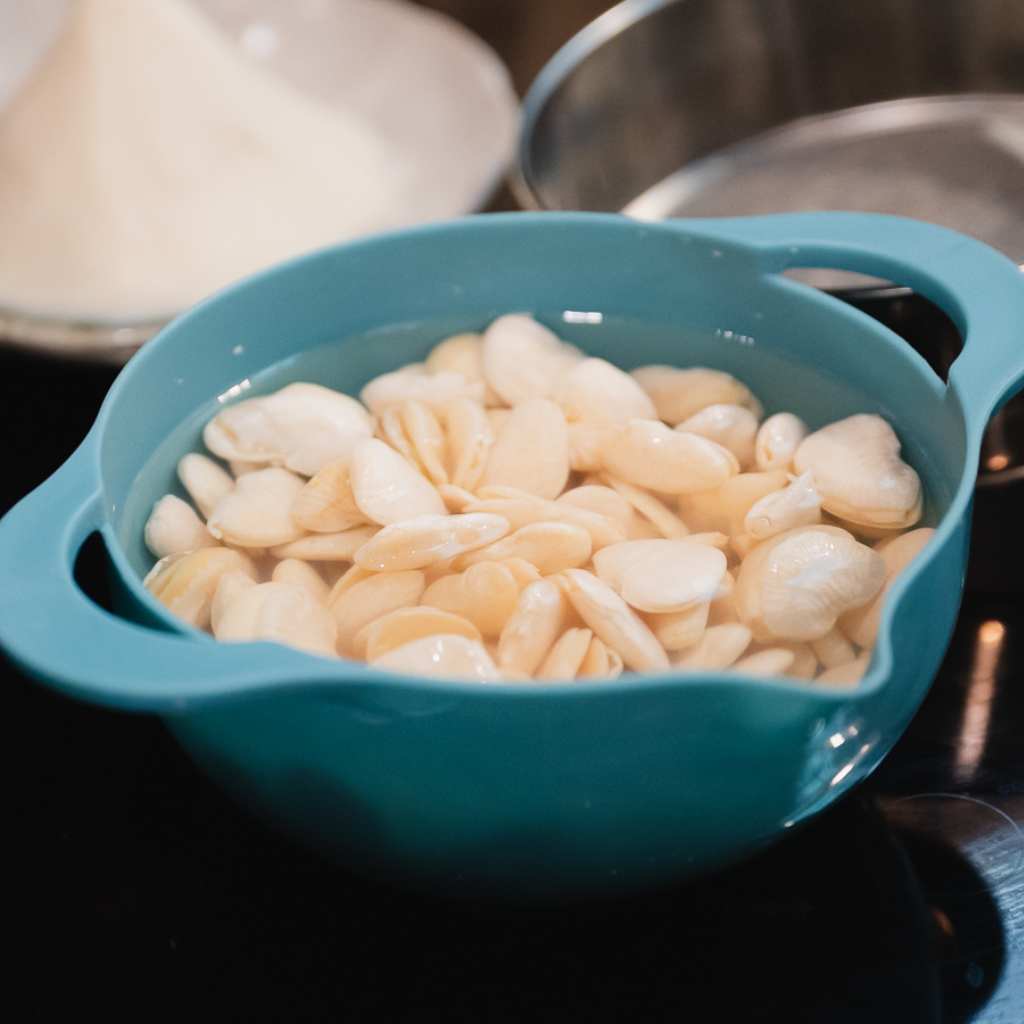
First, we start by preparing shiro-an (white bean paste), a key filling used in Japanese nerikiri wagashi.
Dionne highly recommends the butter beans from Scoop, which yield the desired fragrance and consistency that she’s looking for in her paste.
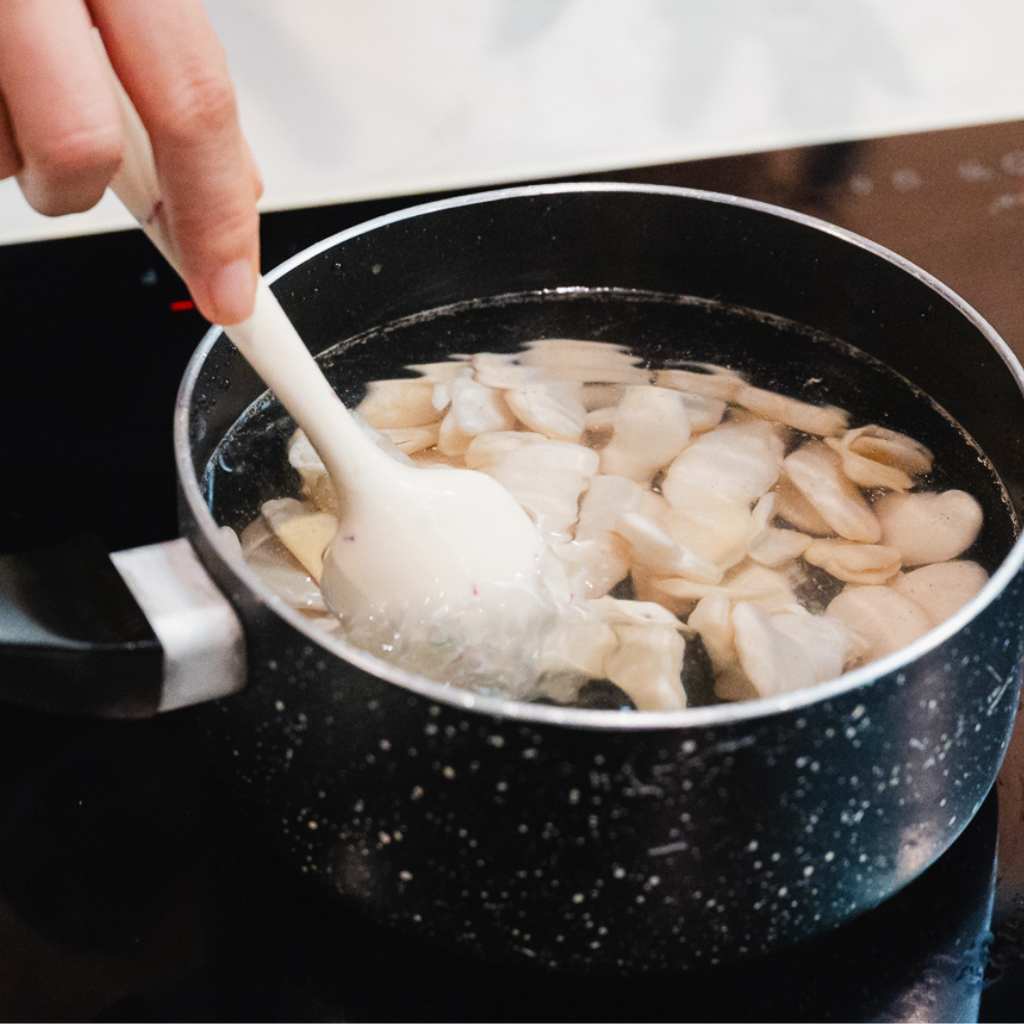
First, boil the butter beans at low to medium heat for about two hours.
This is to soften the skin of the beans, so that it’s easier to de-skin them and mash them into a paste afterwards. You’ll need to frequently stir the pot to ensure that all the beans are thoroughly cooked and at a constant temperature.
However, should the water start to bubble, dial back on the heat slightly — you don’t want the beans to overcook.

There’s no hard and fast rule on the exact temperature and duration to cook the beans for.
But as a rough gauge, when you’re nearing the two-hour mark, scoop some of the beans out of the pot and give them a gentle squeeze.
At this point, if the skin falls off easily, it means that they’ve completely softened and are ready for the next step — removing all the skin from the beans. You want to be gentle and thorough throughout this process.

When all the beans are de-skinned, place them in a fine sieve. Using a spatula, mash the beans until they’ve achieved a velvety, paste-like texture.
This is the desired consistency that you’re looking for, which will give you that melt-in-your-mouth texture.
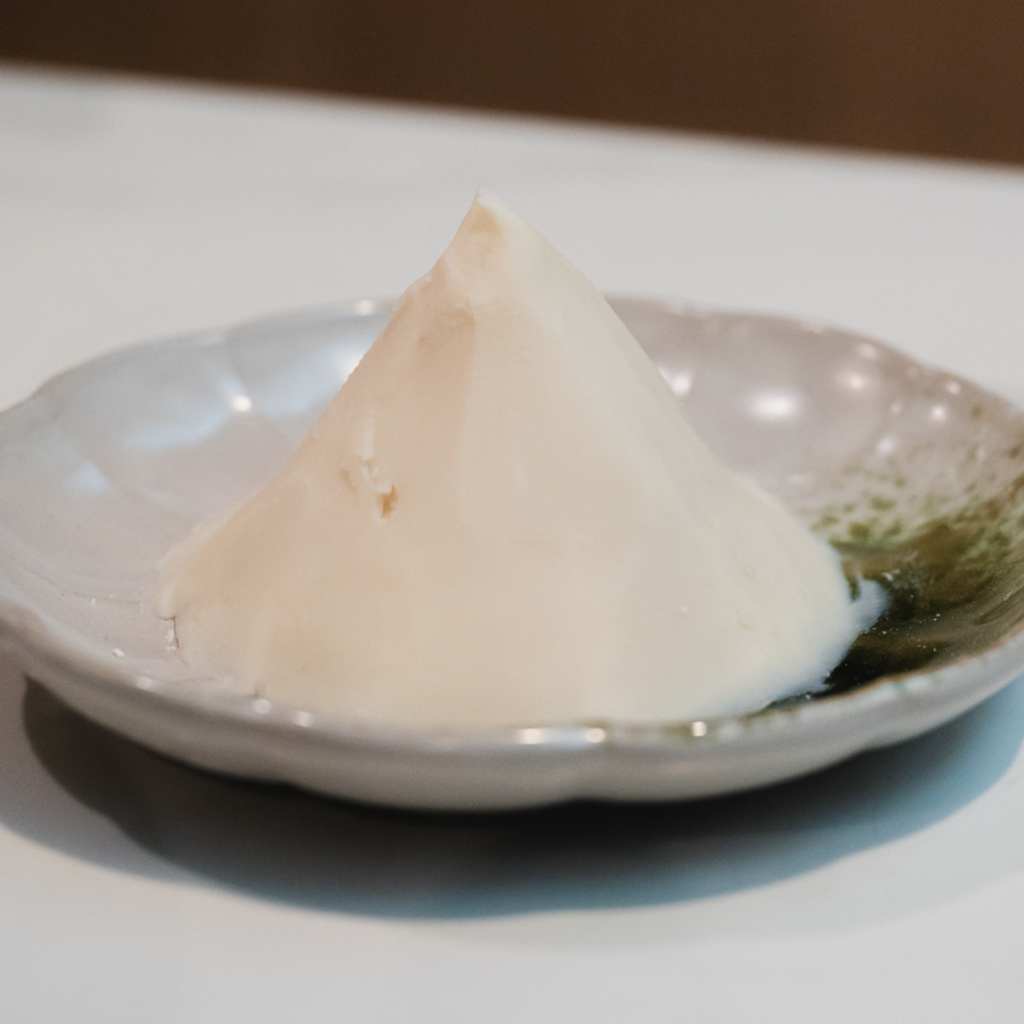
Scoop the paste into a cheesecloth and wring out all excess moisture. The result should be a firm and dry mixture — yet slightly moist to the touch.

In a non-stick pan, add sugar to the mixture and give it a good mix. Traditionally, an equal ratio of paste to sugar is used, but Dionne opts for a little less sugar.
This is so the wagashi isn’t too sweet and also caters to those who prefer reduced sugar in their sweets (siew dai, anyone?).
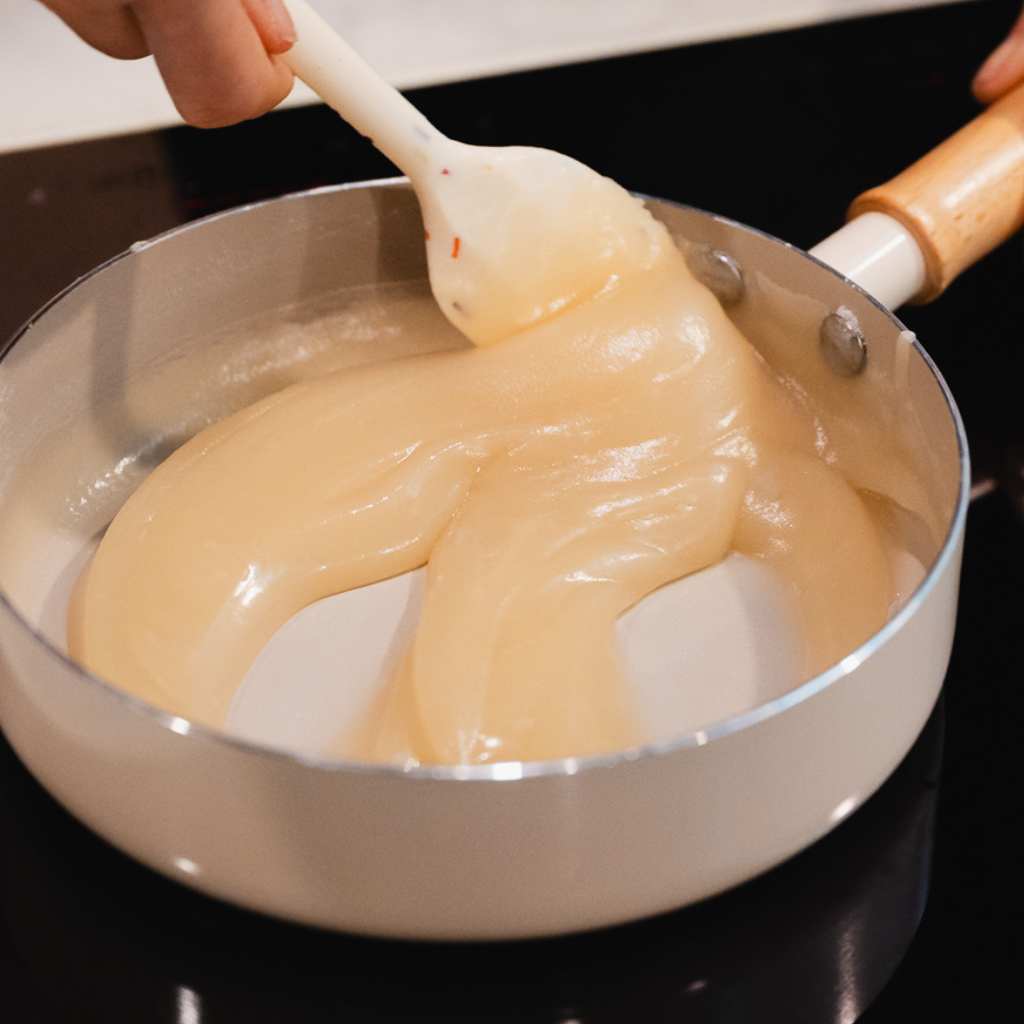
Continue stirring the mixture for another 30 minutes or so.
It should have a creamy texture with a slightly glossy body. Touch the smooth paste with your finger and if it’s not sticky and leaves no residue behind, the bean paste is ready.
Set the shiro-an aside to cool — it will gradually thicken to a firmer texture.
Step 2: Prepare nerikiri dough
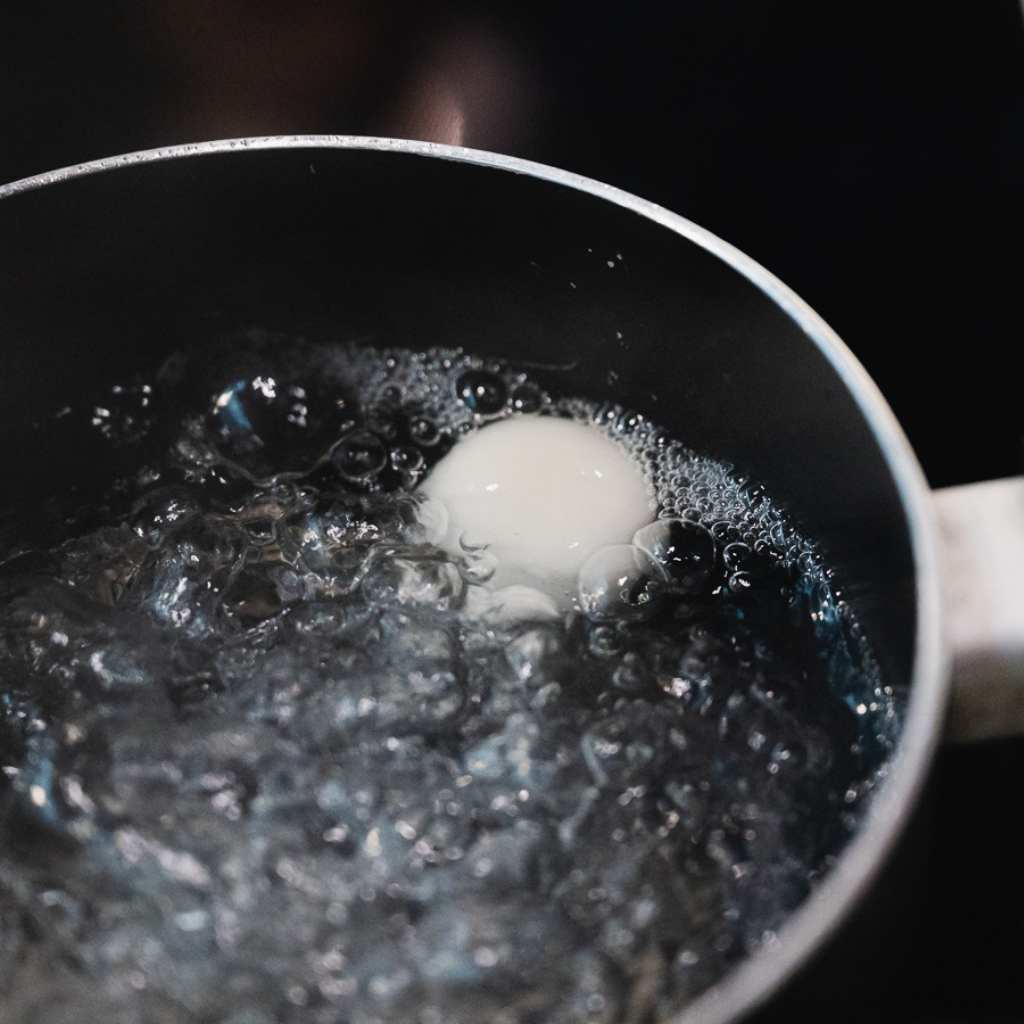
As the shiro-an cools, prepare the gyuhi (soft mochi), which will form the skin of wagashi.
Over a stove, add a ball of shiratamako (glutinous rice flour) to boiling water and let it simmer for about five minutes.
When the water begins to bubble and the shiratamako floats to the surface, that means the gyuhi is done.
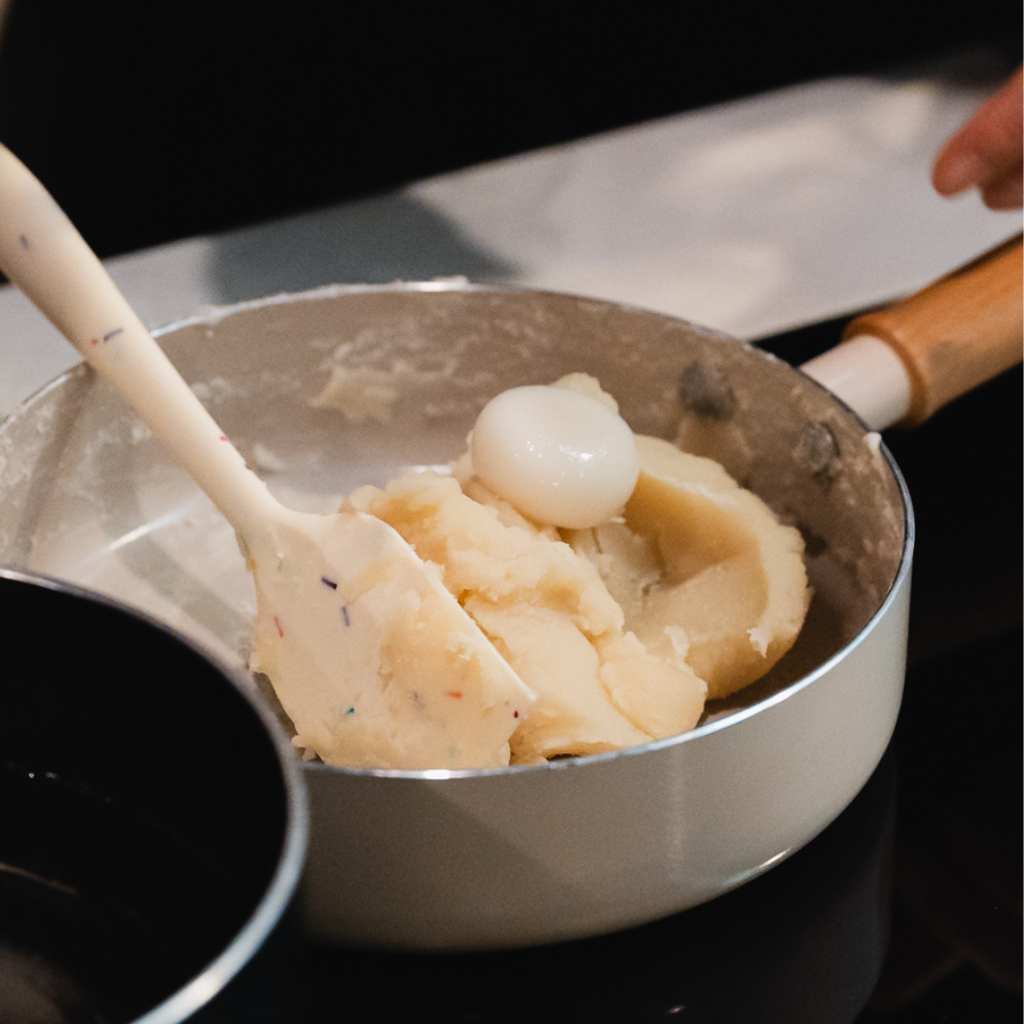
Mix the gyuhi with a small amount of cooled shiro-an. Then, knead the mixture with a spatula until a dough-like texture is formed.

When the dough is ready, it should achieve a firm, slightly malleable elasticity (thanks to the addition of shiratamako). It also shouldn’t stick to the spatula.
Check to ensure that it has reached the perfect consistency by breaking the nerikiri dough into two — it should form two gorgeous peaks.
Step 3: Add food colouring to the nerikiri dough
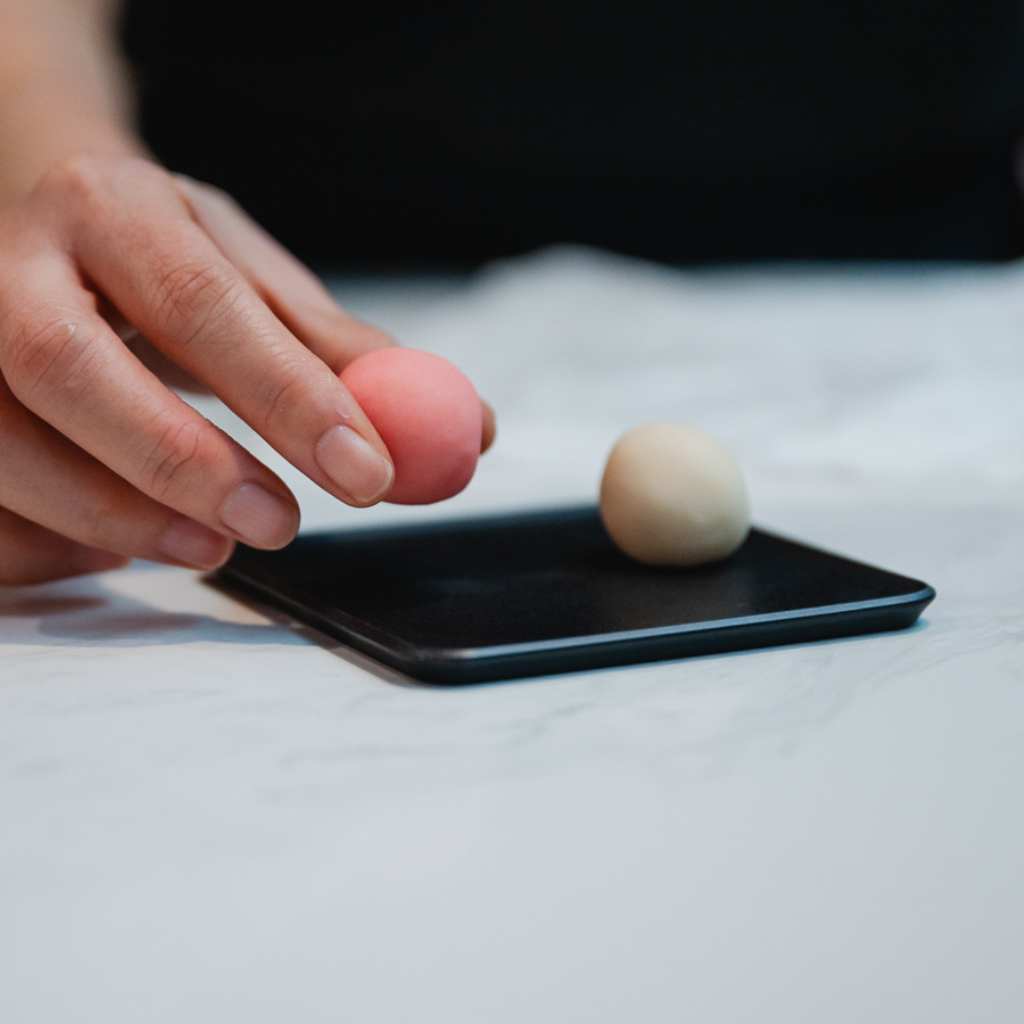
Today, Dionne demonstrates how to make sakura nerikiri wagashi (from S$7 per piece), which was one of her popular designs from the spring season.
The flower is accented with shades of pink and red, so go ahead and add the necessary food colouring to the dough.
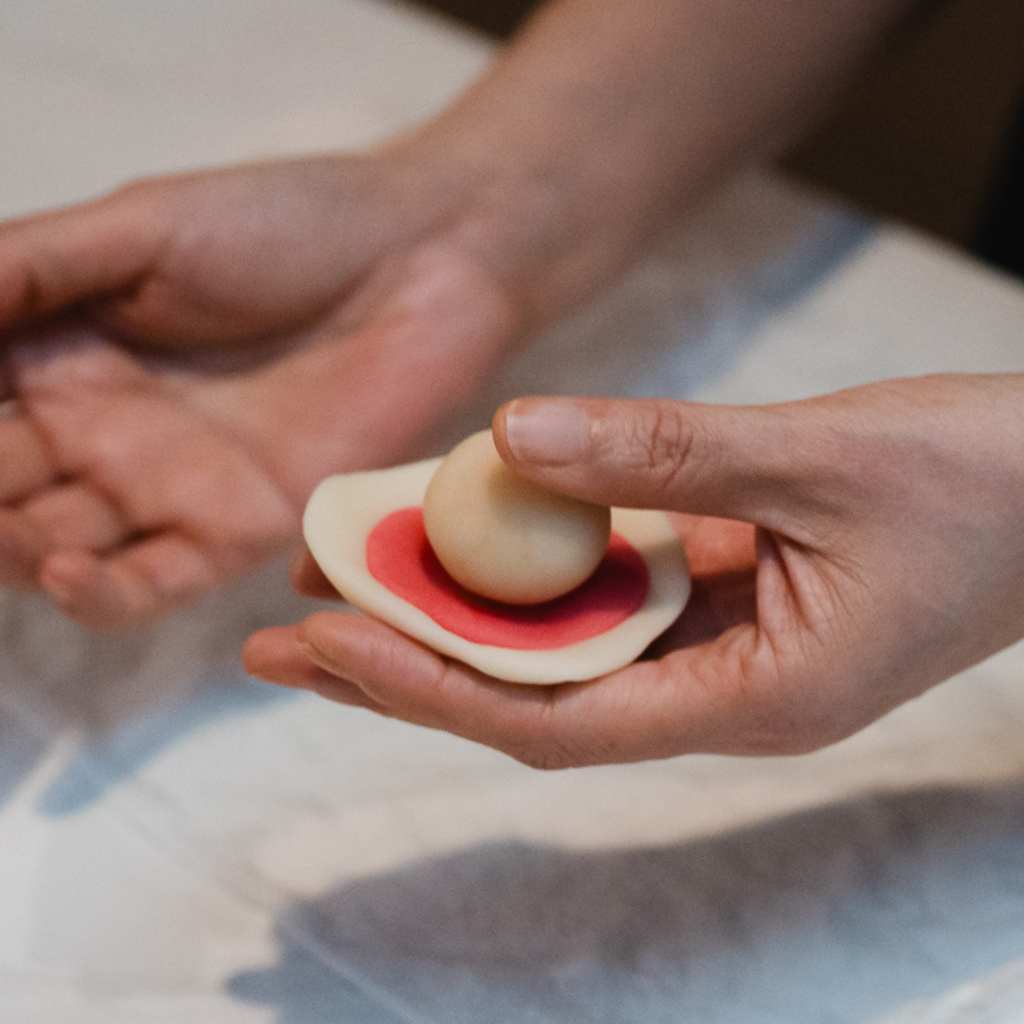
Flatten the nerikiri dough. Next, place a ball of shiro-an filling in the centre of the nerikiri dough, then gently knead it into a smooth, rotund shape.
You’ll notice the colours mingling with each other, creating beautiful swirls of pink and red.
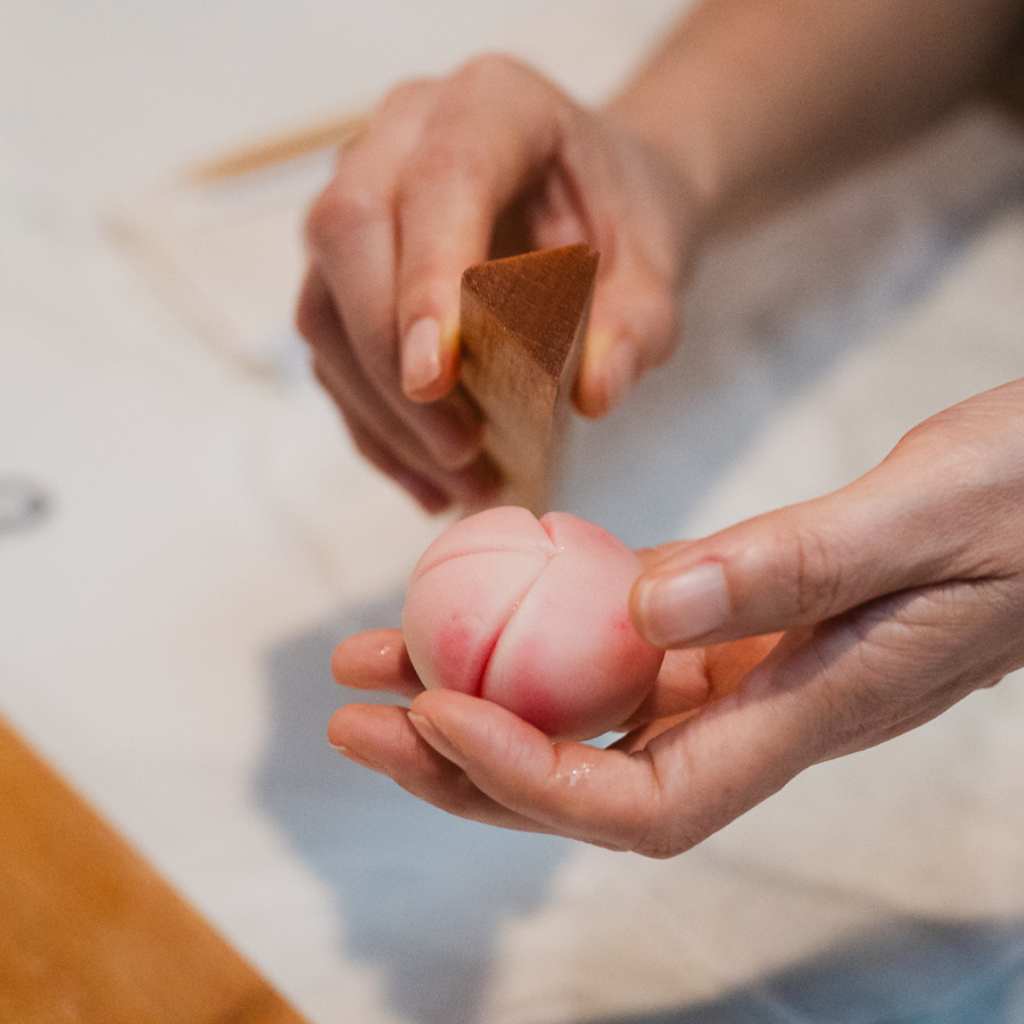
Using a sharp tool, carve floral petals onto the wagashi.
Dionne uses a triangle bar, a handiwork tool that’s commonly used to carve designs on nerikiri wagashi. But any sharp tool does the job, so long it’s able to give you the shape you want.
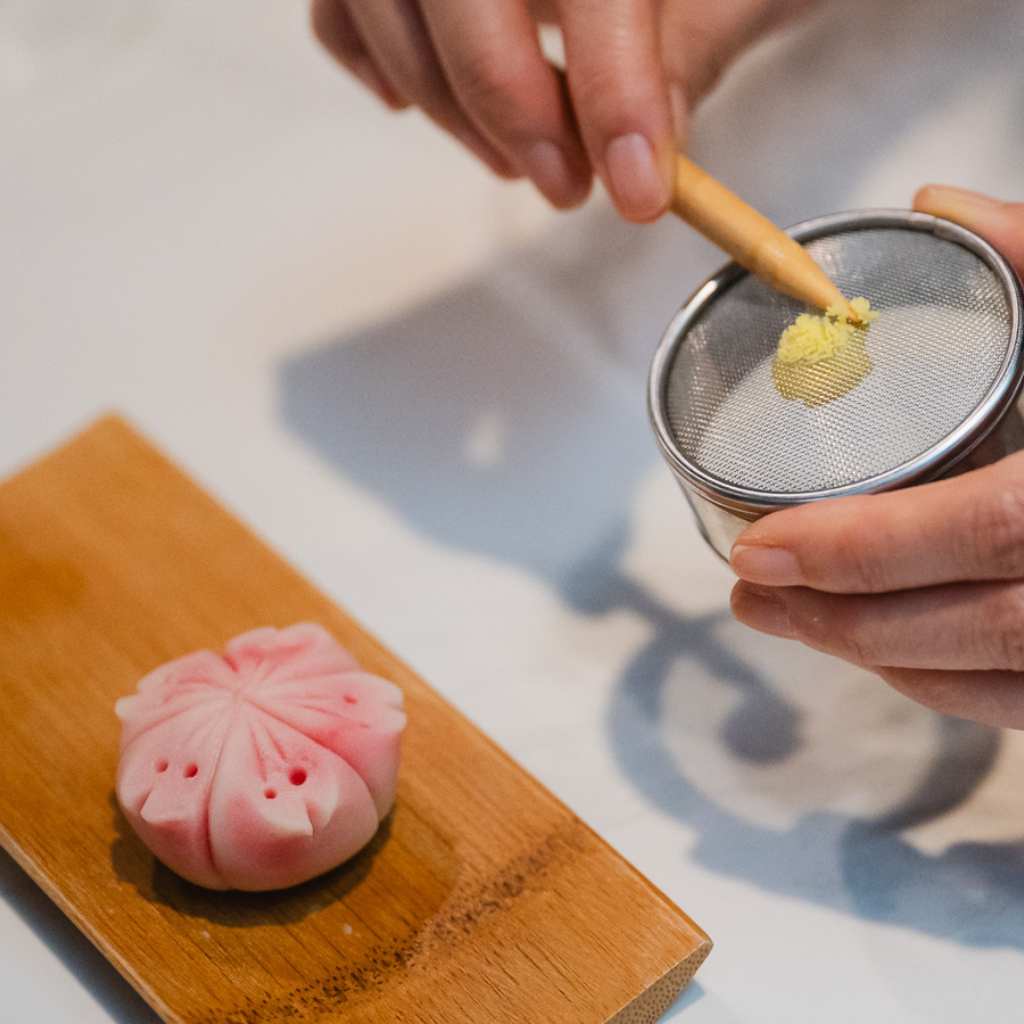
For the final step, spruce up the sakura nerikiri wagashi by adorning it with realistic yellow filaments.
Take a tiny amount of nerikiri dough, decorate it with yellow food colouring and carefully scrape it through a sieve. Then, pepper the sakura nerikiri wagashi with as many “filaments” as you’d like, and voila — the treat is done!
Love for Wagashi will be at Baker X in Orchard Central until Aug 18.
For the latest eats, check out the newly-opened Torori Tenshi No Warabi-mochi and d.i.y. instant noodle cafe Midnight Noodle Club. Alternatively, catch up on the latest openings in town.
Do explore the GrabFood Dine Out service for awesome deals.
Book a ride to Love for Wagashi at Baker X if reading this feature made you crave wagashi!
Love for Wagashi
Orchard Central, 04-29, 181 Orchard Road (Until Aug 18)
Nearest MRT station: Somerset
Open: Wednesday to Sunday (11am to 7pm)
Orchard Central, 04-29, 181 Orchard Road (Until Aug 18)
Nearest MRT station: Somerset
Open: Wednesday to Sunday (11am to 7pm)
